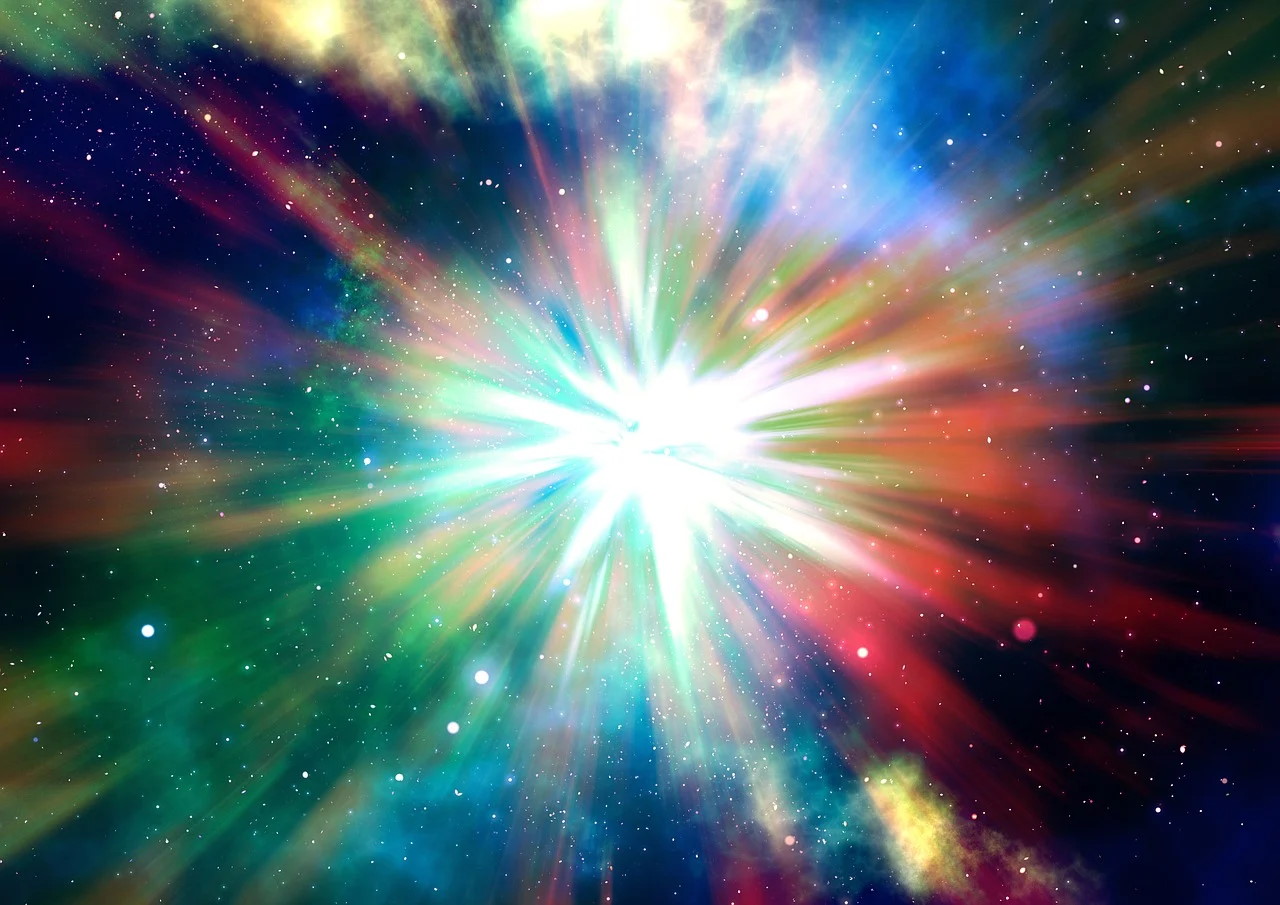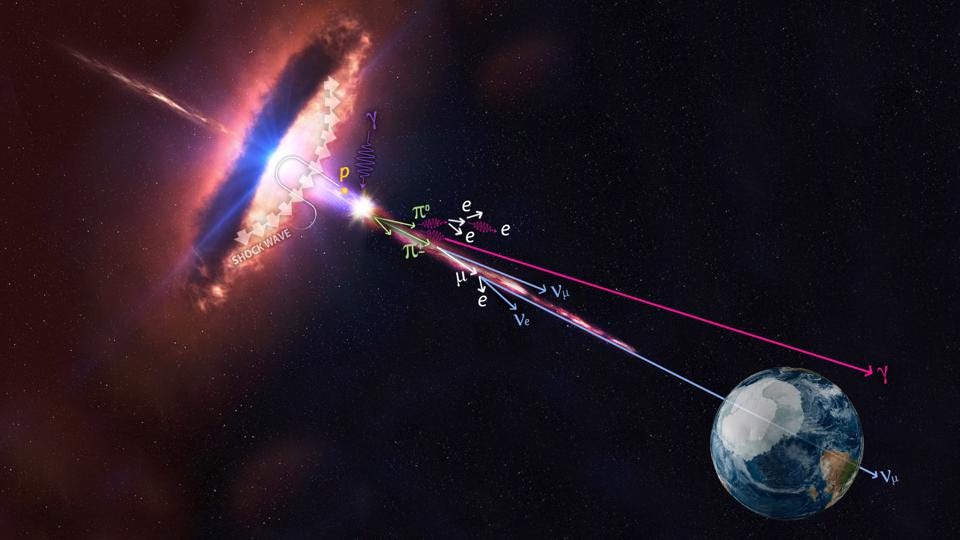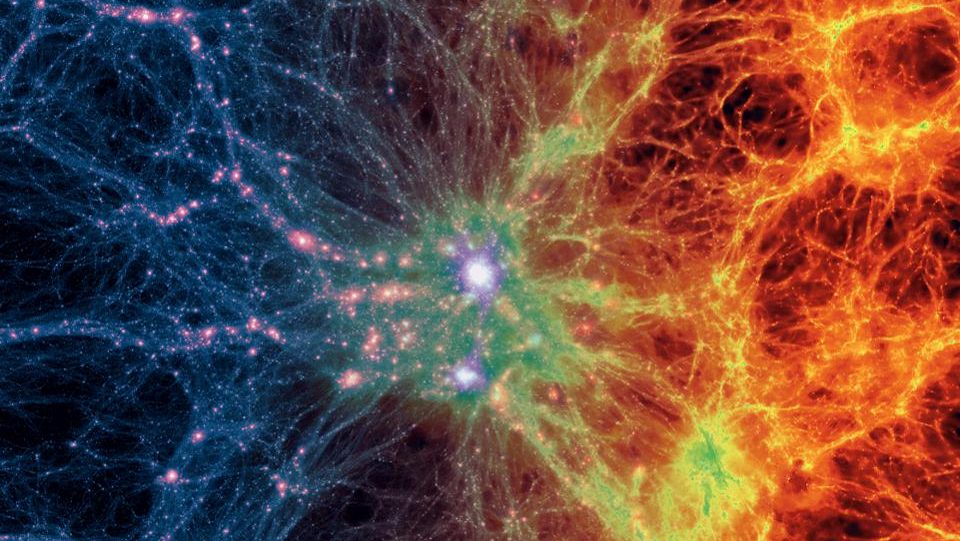Ask Ethan: Could dark matter be decaying… into dark energy?
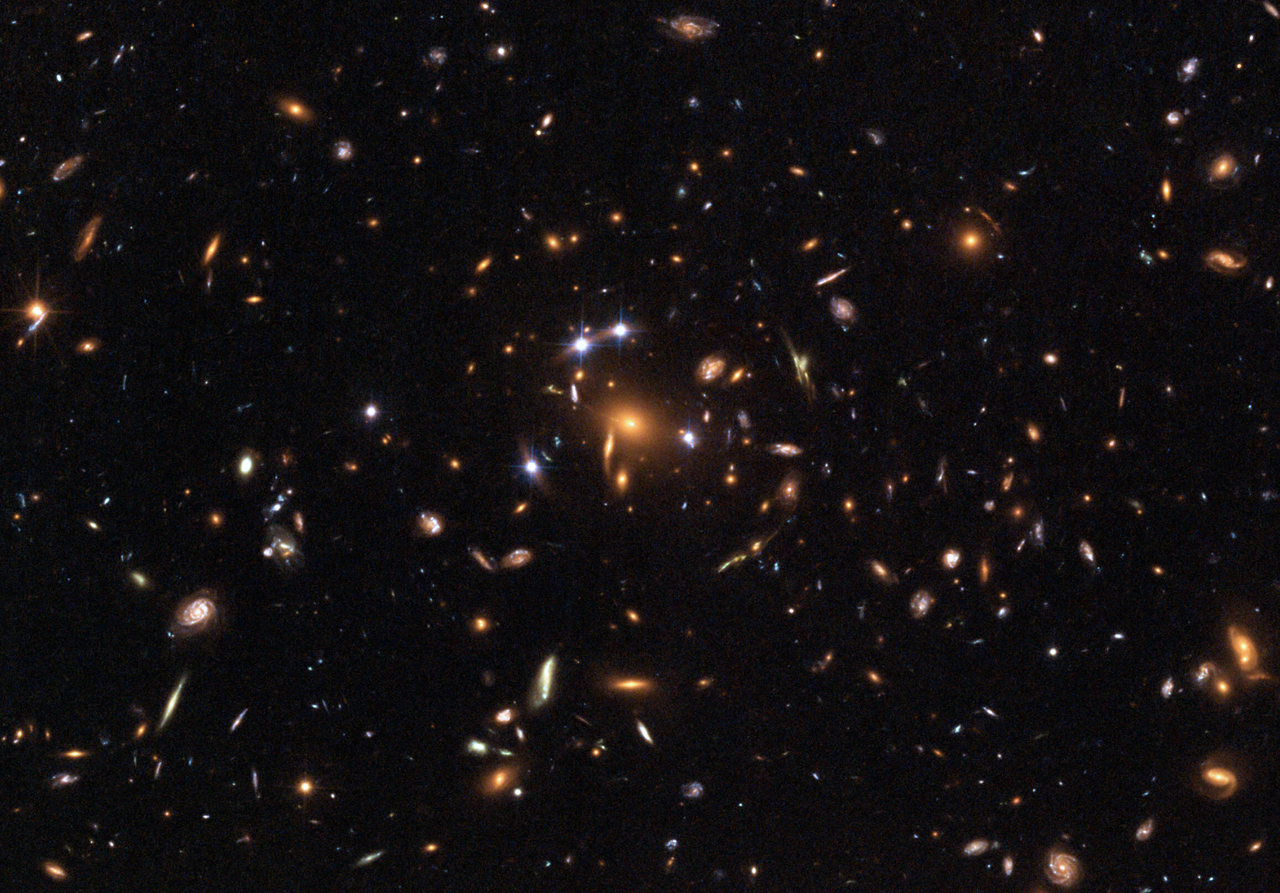
- On the largest cosmic scales, it isn’t atoms or light that dominate the behavior of the expanding Universe, but two invisible, energetic components: dark matter and dark energy.
- Over the past 7 billion years or so, dark matter’s energy density has dropped precipitously, while dark energy has become relatively more important, with the latter now dominating the Universe’s expansion rate.
- Could this be because dark matter is decaying away into dark energy? It’s a wild idea, but one that can be scrupulously scrutinized for its scientific merits. We don’t think so, and here’s why.
It’s no secret that when it comes to the composition of the Universe, we need more than just normal matter and radiation for the cosmic story to add up. From examining all the different forms of matter-and-energy in the Universe, we know that only about 5% of the sum total comes in the form of particles we know: atoms and their constituents, neutrinos, and photons. We have to infer the remainder from our astrophysical observations: of the cosmic microwave background, the Universe’s large-scale structure, and distant, extragalactic probes. When we do, we conclude that 27% of all the energy in the Universe is in some form of invisible, clumping dark matter, and the remaining 68% is evenly distributed throughout all of space: dark energy. Without these two additional ingredients, the Universe just doesn’t add up.
As time goes on, the matter density drops, while the relative fraction of dark energy increases. Could these things be related? That’s the question we get from Petar Trajkov, who looks at the way the Universe has evolved and wonders:
“Isn’t it obvious that the decline of dark matter is connected with increasing dark energy? If we see a timeline of the Universe’s development, it looks like… the disintegration or transformation of dark matter could be a source for the increasing power of dark energy. Do you think there is grounds for such a hypothesis?”
All it takes to make a good hypothesis is a well-posed question, which this is. The critical step is to see how well it stands up to scrutiny.

To start off, we have to understand what dark matter and dark energy actually are. Dark matter behaves just like normal matter does, with one big exception: it doesn’t interact, as far as we can tell, through any of the forces present in the Standard Model. If you were to take an enormous, isolated clump of dark matter and an equal-mass, equal-volume clump of normal matter, separately, and plunked them down in our Universe, here’s what would happen.
- Both of them would gravitate equally, becoming bound and forming a large structure amidst the expanding Universe.
- Every individual particle — whether dark matter or normal matter — would experience an equivalent gravitational force at the equivalent distance, and would complete an ellipsoidal orbit around the center of this massive clump.
- And individual particles that interacted gravitationally would exchange linear and angular momentum from the mutual gravitational forces between them, hurling a bit more matter into the central regions and leaving a bit less in the outskirts.
In terms of gravitation, there’s no difference. But when we consider the non-gravitational effects, the differences become apparent.
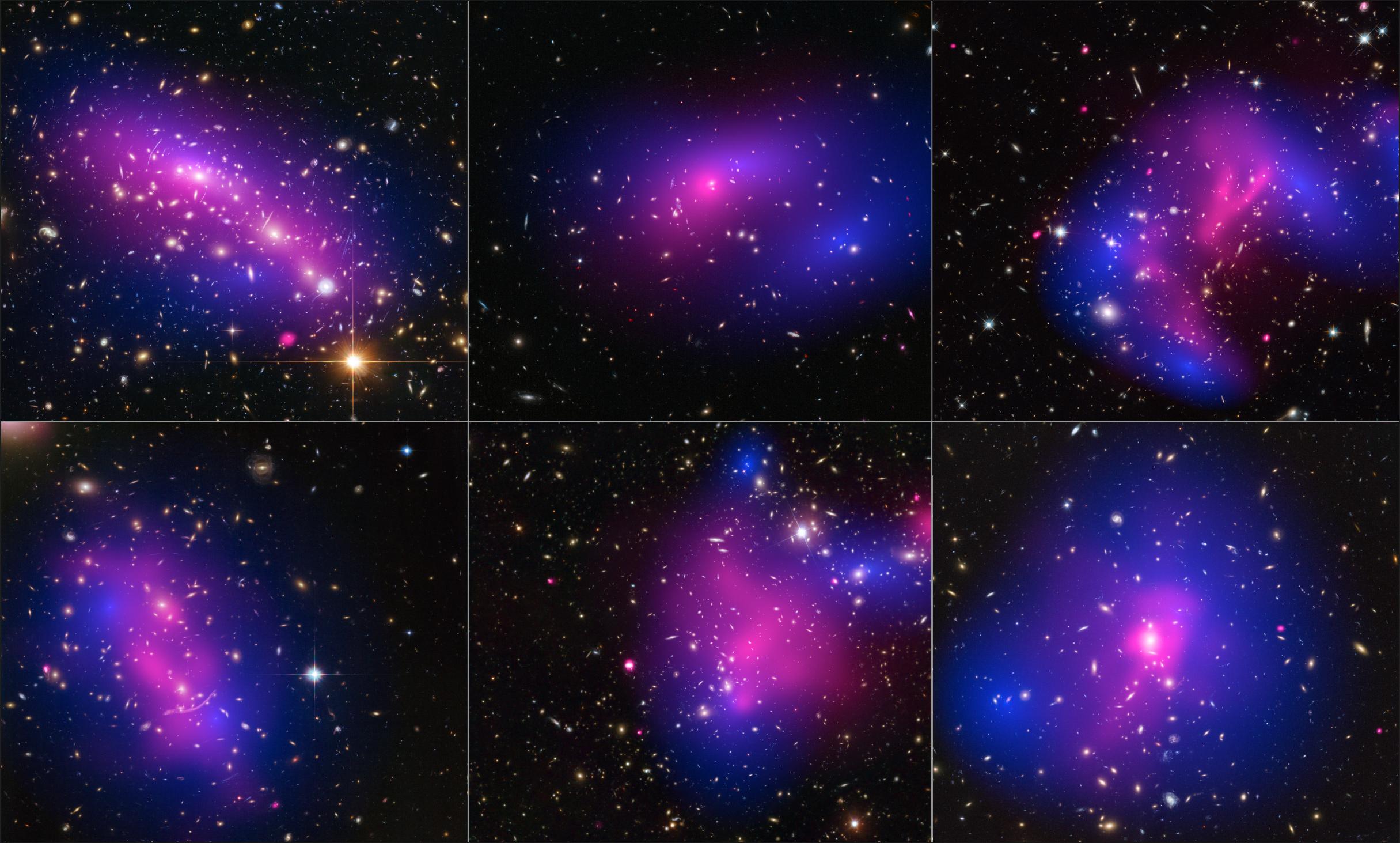
Normal matter, as you can verify by simply clapping your hands together, collides inelastically with other normal matter particles. This means that particles don’t pass through one another, as they do for dark matter, but can shed momentum and angular momentum when they collide, emitting heat and other forms of energy in the process.
Normal matter also, as you can verify by looking at your hands, isn’t transparent to most wavelengths of light. Instead, it absorbs light of some frequencies and wavelengths, while reflecting light at others. This means that normal matter can both emit and absorb light, allowing it to exchange energy, momentum, and angular momentum, and also to both cool down and heat up through collisions.
And finally, there are binding reactions that normal matter can undergo. Electrons and atomic nuclei bind together to form atoms, molecules, and larger, more complex structures. If you gather enough of them together, the high temperatures and pressures can trigger nuclear reactions.
Overall, these forces cumulatively cause normal matter to collect together in much smaller, centralized volumes of space than dark matter, while dark matter remains distributed in large, fluffy, halo-like structures.
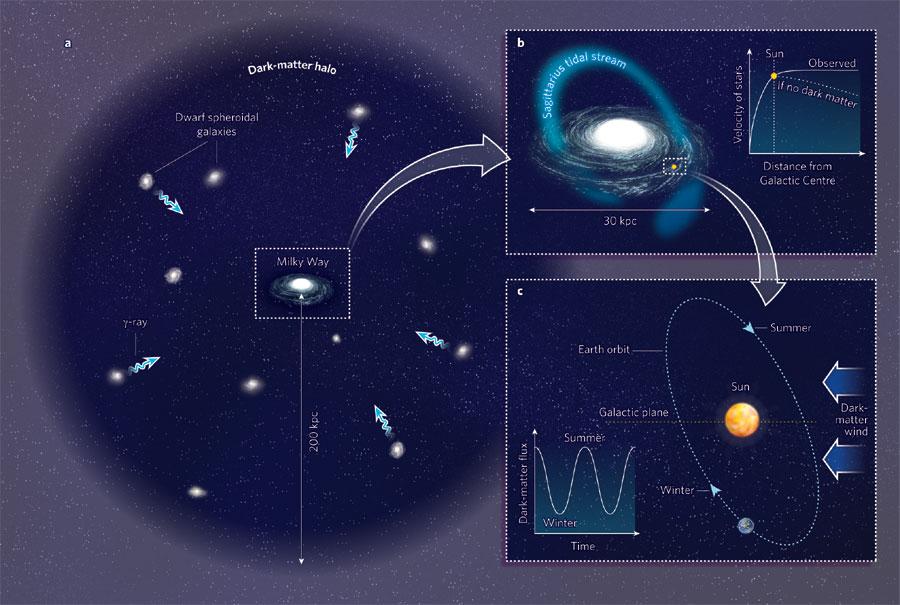
Since dark matter and normal matter both behave as though they’re made out of particles, however, something fascinating happens to them as the Universe expands: their densities drop. Density is simply “something” divided by the volume it occupies, so as long as that “something” is fixed — like a number of particles — then the density dilutes as the volume expands. Double your volume, and your density halves. Go up to ten times your original volume, and your density is just 10% of what it was initially. For both normal matter and dark matter, both the number density and the energy density decrease proportionally as the volume increases.
On the other hand, dark energy behaves in a fundamentally different fashion. Whereas other forms of energy exist against the backdrop of space, dark energy behaves as though it’s a form of energy inherent to space itself. Whether dark energy turns out to arise from:
- the quantum zero-point energy of empty space,
- a cosmological constant term in General Relativity,
- or a field of some sort that’s inextricable from space itself,
isn’t really important for our considerations. What is important is how dark energy behaves: even as the Universe expands, even as its volume increases, the energy density of dark energy remains constant.

This gives us a framework for which to compare our standard conception of the Universe with the alternative one considered here.
In the standard scenario, the Big Bang occurs with a certain amount of each of radiation, neutrinos, normal matter, dark matter, and dark energy. As the Universe expands and cools, the volume increases and individual quanta lose kinetic energy. This causes the energy density of each species to change relative to one another. Radiation and neutrinos dominate initially, but their densities drop the fastest. As a result, dark matter and normal matter rise to become dominant later on, but their densities also drop. It’s only after some 7+ billion years that their densities drop to low enough values that the effects of dark energy, whose density always remains constant, finally starts to show up.
As time continues to pass, the density of everything that’s made out of particles — radiation, neutrinos, normal matter, and dark matter alike — will continue to drop, but the density of dark energy remains constant. This means that we have two ways to think about how the Universe changes.
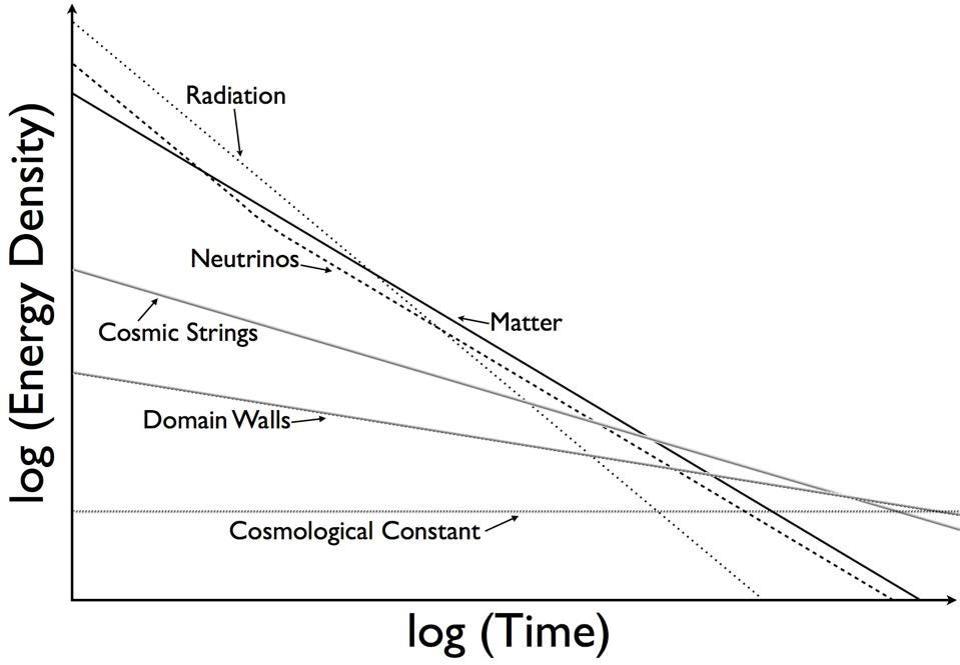
In the first scenario, we can simply look at the relative energy densities of the various species of energy that are present in the Universe. (We can even throw in hypothetical species, like cosmic strings and domain walls, to get a feel for how they’d behave if they did exist.) That’s what the graph, above, shows: the absolute energy density in any region of space. The energy density of different species drop at different rates, but they all decrease with time. The only exception is dark energy, which is expected to remain constant: an expectation that remains consistent with observations.
However, instead of thinking of absolute density, we can conceptualize what’s in the Universe by thinking in terms of relative energy density. At any moment in our Universe’s cosmic history, we can ask the question, “What percent or fraction of the total energy density is accounted for by each individual species?” In this scenario, the total energy density always adds up to 100%, but the relative values for each individual species will evolve as the Universe expands, owing to the fact that different species have different dependences on the expanding Universe. The results of this line of thinking are shown in the graph below.

Now, at last, we’re ready to consider an alternative scenario: what if dark matter is transforming into dark energy?
This is an interesting consideration, because it would alter the entire story we’ve told ourselves up until now. This would imply that, over time, some portion of the dark matter decays, which means that not only will the dark matter density have dropped, but it would have dropped by a relatively greater amount than the normal matter’s density has dropped. Some amount of the initial dark matter would have decayed away, and the dark matter-to-normal matter ratio, therefore, should decrease with time.
It would also imply that, over time, the amount of dark energy in the Universe actually increases. This would represent not just an increase in the relative density of dark energy, but an increase in the absolute density. If dark matter decays into dark energy, then however much energy is lost by the decay of dark matter must be matched, at each moment in time, by an increase in the energy of dark energy. Over time, therefore, the energy density of dark energy will increase.
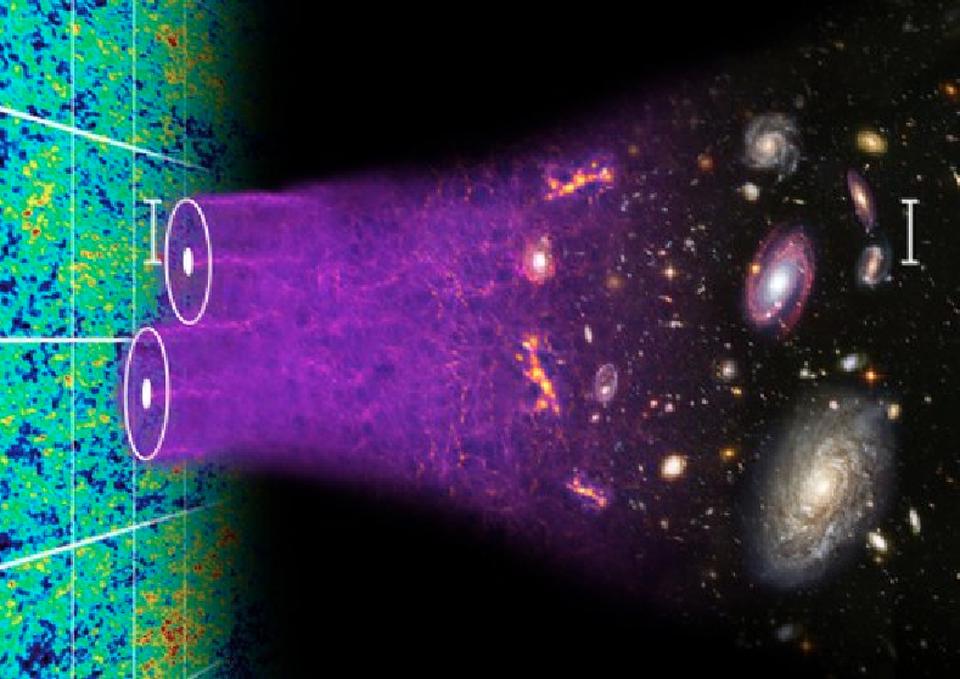
The way we can test the former is to compare the structure we observe in the Universe, which intricately depends on the abundances of normal matter and dark matter, to both the standard and the alternative scenario. If there was more dark matter relative to normal matter, early on, then we’d see evidence for that in the leftover glow of the Big Bang: the cosmic microwave background.
This snapshot of the Universe, even though we’re observing it today, comes from light that was emitted just 380,000 years after the Big Bang. If the ratio of dark matter to normal matter was larger back then — larger than the 5-to-1 ratio we observe it to be in galaxies, galaxy clusters, and the cosmic web today — it would show up in the ratios of the even-and-odd numbered peaks in the cosmic microwave background’s temperature imperfections.
But this is something we’ve measured exquisitely well, and the data is unambiguous: the dark matter-to-normal matter ratio was definitely 5-to-1 in the very early Universe as well. In fact, one of the constraints we have on modified gravity theories — i.e., theories that attempt to explain the Universe we observe without dark matter — is that the effective dark matter to normal matter ratio isn’t allowed to change: a tremendous problem with, for example, Erik Verlinde’s theory of emergent, entropic gravity.
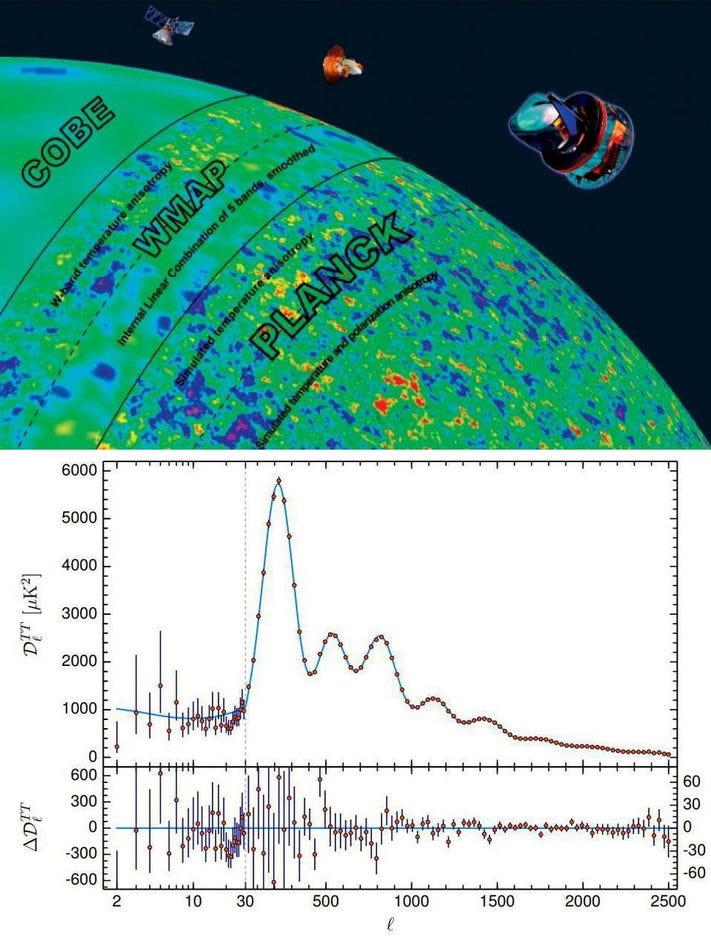
We can also look to see if there’s evidence that there was a different amount of dark energy in the young Universe, as opposed to the modern, late-time Universe, by intricately measuring the expansion rate at different cosmic epochs.
As it turns out, interestingly, there actually is a bit of a discrepancy from what we expect! If we start from today and measure backward in time, we find that the Universe expands at a particular rate today, largely dominated by dark energy. If we start from the earliest imprinted signals and measure how they evolve forward in time, we get a different, smaller value for how the Universe has expanded up through the present day.
Could a progressively increasing value for dark energy explain this observation?
It’s a tantalizing possibility, but as it turns out, that’s precisely the opposite of what we’d need to match observations. If we had a greater amount of dark energy early on than we do today — a form of early dark energy that partially decayed away — that could help resolve the conundrum surrounding the expanding Universe. If we instead demanded that dark energy got stronger over time, we’d simply make this puzzle even worse.
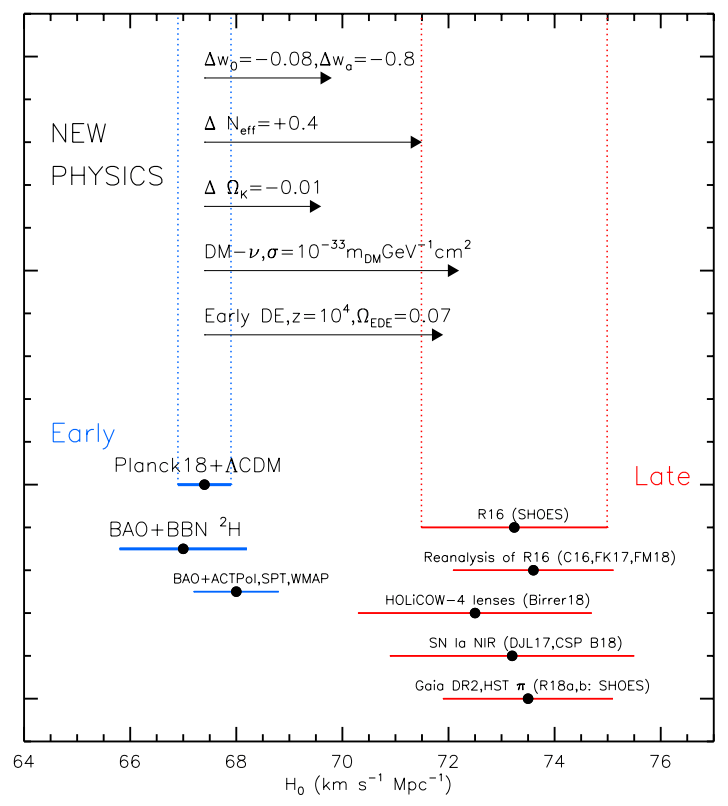
Dark matter does decline in the Universe relative to dark energy, but that cannot be construed to mean that dark matter is decaying or transforming into dark energy. Instead, the evidence shows us that:
- the ratio of dark matter to normal matter remains constant,
- the relative abundance of dark matter decreases solely due to the fact that the Universe expands,
- the total energy density of dark energy appears not to change with time, but rather to remain constant,
- and therefore, dark energy only becomes relatively more important as the Universe expands, not absolutely more energetic.
This, believe it or not, is exactly what we want when we consider a new scientific idea, hypothesis, or theory: a clear set of predictions that are linked to the Universe in an observable, measurable, testable fashion. In this case, those predictions didn’t work out, and we can place meaningful constraints on how little dark matter could have decayed (less than ~10% of it, at most), and also how little dark energy’s overall density could have increased (by a maximum of ~7% over the Universe’s history, at most).
Dark matter is becoming less abundant in the Universe relative to dark energy, but as soon as you account for how the Universe expands, the amount of those relative changes needs no further modification. There may be plenty left to learn about dark matter and dark energy both, but the decay of one into the other isn’t responsible for all the phenomena we’ve seen so far.
Send in your Ask Ethan questions to startswithabang at gmail dot com!

